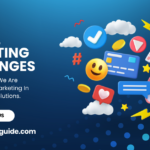Introduction:
Artificial Intelligence Tools and Techniques, In an era where technology is advancing at an unprecedented pace, Artificial Intelligence (AI) has emerged as a transformative force, reshaping industries, automating processes, and influencing the way we interact with the world. As AI continues to evolve, so do the tools and techniques that drive its capabilities. This comprehensive blog aims to provide a deep dive into the realm of Artificial Intelligence, exploring the diverse set of tools and techniques that contribute to its power and impact.

Understanding the Foundations: Artificial Intelligence Tools and Techniques
1. Supervised Learning:
- Explanation: In supervised learning, algorithms are trained on labeled datasets, allowing them to make predictions or decisions based on input-output pairs. This technique is widely used in tasks such as image recognition, natural language processing, and predictive modeling.
2. Unsupervised Learning:
- Explanation: Unsupervised learning deals with unlabeled data, uncovering patterns and relationships without predefined outcomes. Clustering, dimensionality reduction, and association rule learning are common applications of unsupervised learning algorithms.
3. Reinforcement Learning:
- Explanation: Reinforcement learning involves an agent that interacts with an environment, learning to make decisions by receiving rewards or penalties. This approach is pivotal in training systems for autonomous vehicles, gaming strategies, and robotics.
Diving Deeper: Neural Networks and Deep Learning
Artificial Intelligence Tools and Techniques,
1. Convolutional Neural Networks (CNNs):
- Explanation: CNNs specialize in image processing, utilizing convolutional layers to detect patterns and features. Image classification, object detection, and facial recognition systems heavily rely on CNNs.
2. Recurrent Neural Networks (RNNs):
- Explanation: Designed for sequential data, RNNs incorporate loops in their architecture, allowing information persistence over time. Applications range from natural language processing and speech recognition to time series analysis.
3. Transfer Learning:
- Explanation: Transfer learning involves leveraging pre-trained models on one task and fine-tuning them for another. This technique reduces the need for extensive datasets and computational resources, making it more accessible for various applications.
Harnessing Language: Natural Language Processing (NLP) Techniques
Artificial Intelligence Tools and Techniques,
1. Tokenization and Named Entity Recognition (NER):
- Explanation: Tokenization breaks down text into tokens or words, while NER identifies entities within the text, such as names, organizations, and locations. These techniques are fundamental in information extraction and text analysis.
2. Sentiment Analysis:
- Explanation: Sentiment analysis determines the emotional tone of a piece of text, helping businesses understand customer feedback, monitor brand sentiment, and make data-driven decisions based on public opinions.
3. Language Models (e.g., GPT):
- Explanation: Pre-trained language models like GPT (Generative Pre-trained Transformer) understand context and generate coherent text. They find applications in chatbots, content creation, and other areas requiring context-aware language processing.
Optimizing for Success: AI in SEO Practices
Artificial Intelligence Tools and Techniques,
1. Keyword Integration:
- Explanation: Seamless integration of relevant keywords into content is crucial for search engine optimization (SEO). This involves thorough keyword research, strategic placement, and alignment with user intent.
2. Meta Tags and Descriptions:
- Explanation: Crafting compelling meta tags and descriptions not only entices users but also contributes to better click-through rates and improved search engine rankings.
3. Mobile Optimization:
- Explanation: Mobile-friendly websites receive preferential treatment from search engines. Optimizing content for mobile users is essential in an era dominated by smartphones and tablets.
4. Quality Content Creation:
- Explanation: Creating high-quality, shareable content naturally attracts backlinks, signaling to search engines that your content is valuable and authoritative.
5. Backlink Strategies:
- Explanation: Effective backlink strategies involve collaborating with influencers, authoritative sites, and engaging in guest blogging. Quality backlinks enhance your website’s credibility and improve its visibility in search results.
6. Social Media Signals:
- Explanation: Leveraging social media platforms to share AI-driven content amplifies its reach and contributes to improved search engine rankings.
Artificial Intelligence Tools and Techniques,
Conclusion: Navigating the AI Landscape for Future Success
Artificial Intelligence has transcended from a concept in science fiction to a powerful force shaping our digital future. From machine learning algorithms and neural networks to natural language processing techniques, the tools and techniques explored in this blog represent the building blocks of AI innovation.
As businesses and individuals navigate the complex landscape of AI, understanding and harnessing these tools become imperative. The integration of AI into SEO practices further ensures that innovations are not only technologically advanced but also strategically positioned for optimal visibility in the digital realm. In conclusion, the journey through Artificial Intelligence tools and techniques is a journey into the future. Embrace the potential of AI, master its tools, and position yourself at the forefront of innovation. The digital age is evolving, and with a deep understanding of AI, success is not just attainable; it’s inevitable. for help please visit SGK








